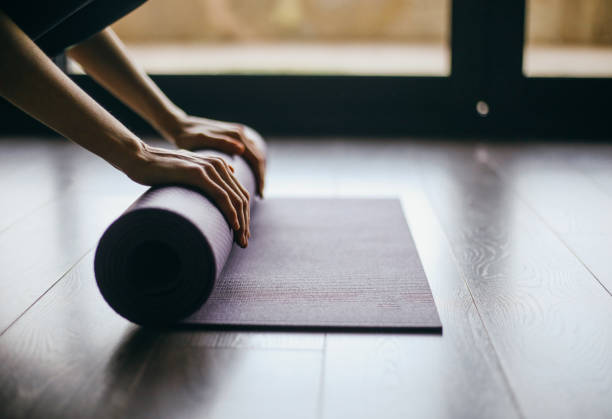
Matching floor mats for a sitting room with your overall décor can elevate the aesthetic appeal and create a cohesive look in your home. Floor mats not only provide comfort and protection but also play a significant role in defining the style and ambiance of your sitting room. This guide will help you understand how to select and match floor mats to enhance your sitting room décor.
Understanding Your Sitting Room Décor
Before selecting floor mats for a sitting room, it’s essential to have a clear understanding of your room’s existing décor. Consider the following elements:
- Color Scheme: Identify the primary and accent colors used in your sitting room. This includes wall colors, furniture, and accessories.
- Style: Determine the overall style of your sitting room, such as contemporary, traditional, rustic, or eclectic.
- Furniture Layout: Note the arrangement and size of your furniture, as this will influence the size and placement of your floor mats.
Choosing the Right Color
The color of your floor mats for a sitting room should complement your room’s color scheme. Here are some tips for choosing the right color:
- Neutral Colors: Neutral colors like beige, gray, and white are versatile and can seamlessly blend with most décor styles. They create a calm and cohesive look.
- Bold Colors: If you want to add a pop of color, choose a floor mat in a bold hue that complements your room’s accent colors. This can add energy and vibrancy to the space.
- Complementary Colors: Select a color that complements the primary colors in your sitting room. Use a color wheel to find complementary colors that will create a harmonious look.
Selecting the Appropriate Pattern
The pattern of your floor mats for a sitting room can add visual interest and texture. Here are some popular patterns to consider:
- Geometric Patterns: Geometric patterns are ideal for contemporary and modern décor. They add a structured and dynamic element to the room.
- Floral Patterns: Floral patterns work well in traditional or vintage settings. They add a touch of elegance and softness.
- Abstract Patterns: Abstract patterns are versatile and can fit into various décor styles. They add an artistic and unique touch to the sitting room.
- Solid Colors: If your sitting room already has a lot of patterns and textures, a solid-colored floor mat can balance the look and prevent visual clutter.
Considering the Material
The material of the floor mats for a sitting room affects both the look and feel of your space. Here are some common materials and their characteristics:
- Wool: Wool mats are luxurious, durable, and provide excellent insulation. They are perfect for adding warmth and comfort to your sitting room.
- Cotton: Cotton mats are soft, breathable, and easy to clean. They are ideal for casual and relaxed settings.
- Synthetic Fibers: Mats made from synthetic fibers like nylon and polyester are affordable, durable, and stain-resistant. They are suitable for high-traffic areas.
- Natural Fibers: Natural fibers like jute, sisal, and bamboo add an organic and earthy element to your décor. They are eco-friendly and durable but may not be as soft underfoot.
Matching the Style
To ensure your floor mats for a sitting room match your décor style, consider the following:
- Contemporary Style: Opt for mats with clean lines, geometric patterns, and neutral or bold colors. Materials like wool and synthetic fibers work well in contemporary settings.
- Traditional Style: Choose mats with intricate patterns, such as floral or oriental designs. Rich colors and materials like wool or cotton add a touch of classic elegance.
- Rustic Style: Natural fiber mats in earthy tones are perfect for rustic décor. Look for mats with textures that mimic natural elements.
- Eclectic Style: Mix and match different patterns, colors, and materials. An eclectic style allows for creative combinations that reflect your unique taste.
Size and Placement
The size and placement of your floor mats for a sitting room can significantly impact the room’s overall look. Here are some guidelines:
- Under Furniture: Ensure the floor mat is large enough to fit under all the furniture legs in a seating area. This creates a cohesive and grounded look.
- Accent Mats: Smaller accent mats can be placed in front of sofas, chairs, or coffee tables to add visual interest and define spaces.
- Layering: Layering different sized mats can add depth and texture. For example, place a smaller patterned mat on top of a larger solid-colored one.
Incorporating Additional Features
To enhance the functionality and protection of your sitting room, consider incorporating additional features like an oil mat and a sofa guard.
Oil Mat
An oil mat is designed to absorb and contain spills, making it a practical addition to your sitting room. Place an oil mat under plants, near food and drink stations, or in areas where you might use essential oils. This helps protect your flooring and keeps your sitting room clean and tidy.
Sofa Guard
A sofa guard protects your sofa from spills, stains, and wear and tear. Sofa guards are available in various materials and designs, allowing you to choose one that complements your décor. Using a sofa guard can extend the life of your sofa and maintain the overall appearance of your sitting room.
Coordinating with Other Decor Elements
For a cohesive look, coordinate your floor mats for a sitting room with other decor elements:
- Furniture: Ensure the color and pattern of the floor mats complement your furniture. For example, a bold mat can add interest to a neutral sofa, while a neutral mat can balance a bold sofa.
- Accessories: Match the mats with cushions, throws, and artwork to create a unified look. This can tie the room together and enhance the overall aesthetic.
- Lighting: Consider how the mats look under different lighting conditions. Natural light can highlight the colors and patterns, while artificial light can create shadows and depth.
Seasonal Changes
Changing your floor mats for a sitting room according to the season can refresh the look of your space. Here are some seasonal tips:
- Spring and Summer: Opt for lighter, brighter colors and breathable materials like cotton or natural fibers. This creates a fresh and airy feel.
- Fall and Winter: Choose warmer, richer colors and materials like wool for added warmth and coziness. Darker tones can create a snug and inviting atmosphere.
Layering Mats
Layering mats can add depth and texture to your sitting room. Here are some tips for layering:
- Mix Materials: Combine different materials, such as placing a soft wool mat over a natural fiber mat. This adds visual interest and tactile variety.
- Vary Sizes: Use mats of different sizes to create a layered effect. For example, place a smaller mat on top of a larger one to highlight a specific area.
- Combine Patterns: Mix and match patterns to create a unique look. Ensure the patterns complement each other to avoid visual clutter.
Personalizing Your Space
Your sitting room should reflect your personality and style. Here are some ways to personalize your space with floor mats for a sitting room:
- Custom Mats: Consider custom-made mats that feature your preferred colors, patterns, and materials. This allows you to create a unique and personalized look.
- DIY Projects: If you enjoy DIY projects, create your own floor mats using materials and designs that match your décor. This adds a personal touch and a sense of accomplishment.
- Artistic Mats: Choose mats with artistic designs that resonate with you. This can include abstract patterns, artistic prints, or cultural motifs.
Maintenance and Care
Proper maintenance and care of your floor mats for a sitting room ensure they remain beautiful and functional. Here are some tips:
- Regular Cleaning: Vacuum the mats regularly to remove dust and debris. For natural fiber mats, use a gentle brush to clean the surface.
- Spot Cleaning: Address spills and stains immediately to prevent them from setting. Use a mild detergent and water for spot cleaning.
- Deep Cleaning: Periodically, deep clean the mats according to the manufacturer’s instructions. This helps maintain their appearance and prolongs their lifespan.
- Rotation: Rotate the mats regularly to ensure even wear and prevent specific areas from becoming too worn.
Sustainability and Eco-Friendliness
If sustainability is important to you, choose eco-friendly floor mats for a sitting room. Here are some options:
- Natural Fibers: Mats made from natural fibers like jute, sisal, and bamboo are eco-friendly and biodegradable. They add a natural and earthy element to your décor.
- Recycled Materials: Some mats are made from recycled materials, such as PET bottles or reclaimed wood. These mats are environmentally friendly and contribute to reducing waste.
- Organic Materials: Look for mats made from organic materials that are free from harmful chemicals and dyes. These mats are better for the environment and your health.
Budget Considerations
When selecting floor mats for a sitting room, consider your budget. Here are some tips for finding quality mats within your budget:
- Set a Budget: Determine how much you are willing to spend on floor mats and stick to your budget.
- Quality vs. Price: While it might be tempting to choose the cheapest option, consider the quality and durability of the mat. Investing in a high-quality mat can save you money in the long run.
- Sales and Discounts: Look for sales and discounts to get the best deals on floor mats. Many retailers offer seasonal sales or discounts on discontinued styles.
Conclusion
Matching floor mats for a sitting room with your décor involves considering various factors such as color, pattern, material, style, size, and placement. By keeping these factors in mind, you can select floor mats that enhance the aesthetics and functionality of your sitting room, providing comfort and style.



